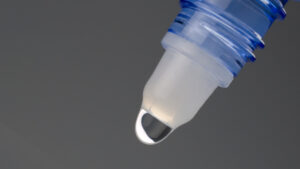
This week’s question comes from Susan in Bernal Heights. She asks, “Chris, I heard recently that thousands of young kids are poisoned each year from eating laundry pods they think is candy. Why isn’t anything being done to protect our children?”
Susan, thank you for raising this issue. As a parent myself, I find it deeply troubling that some of the nation’s largest corporations are selling an extremely toxic household product and have failed to take all reasonable measures to safeguard our children from accidental exposure to the product.
Editor’s Note: If your child suffered a grave injury after accidentally ingesting detergent in a laundry pod, please click here to contact. We will review your claim for free and with no obligation on your part.
Laundry detergent packets, or laundry pods, are single-load gel-like capsules that contain concentrated liquid detergent within a thin membrane that dissolves in water.
While all household detergents have the potential to cause illness, the detergent in laundry pods is highly dangerous. When bitten into or swallowed, laundry pods can induce profuse vomiting, extreme breathing difficulties, seizures, chemical burns, dangerously slow heartbeats, coma and even death.
A study published last week online in Pediatrics found that U.S. poison control centers received more than 20,000 calls about children who had been exposed to laundry detergent packets between January 2013 and December 2014.
“A child only has to put this packet in their mouth and bite down, and as soon as it bursts, game over,” said Dr. Gary Smith, the senior author of the study.
So how did such a danger enter American households?
In 2012, Proctor & Gamble was the first company to mass market laundry pods in the U.S. Reportedly, P&G had delayed introducing its Tide Pods out of concern that young children would eat the capsules. P&G’s concern was well-placed and, to date, has not been adequately addressed.
Poison centers started receiving calls from frantic parents soon after the pods were introduced. P&G and other manufacturers responded by making packaging and labeling changes. Clear outer containers were replaced with blurred plastic and made harder to open. These changes have proven ineffective.
Last year, an investigation by the Wall Street Journal found that at least seven persons in the U.S. – children and adults with dementia – had died after biting into laundry pods.
In July 2015, Consumer Reports said enough was enough. It took the extraordinary step of removing laundry pods from its list of recommended detergents. “And we strongly urge households where children younger than 6 are ever present to skip them altogether,” Consumer Reports declared.
At the same time, U.S. Rep. Jackie Speier and Sen. Dick Durban introduced bills to require manufacturers of liquid laundry pods to meet new requirements for packaging and warning labels, redesign the pods to make them less attractive to children and alter the detergent itself to reduce its toxicity. The bills were referred to Congressional committees. Nothing further has occurred.
Given that Republicans control Congress and value first and foremost the interests of large corporations, I expect that no action will be taken on the legislation.
The legislation and media attention, however, prodded manufacturers to adopt a new set of voluntary standards last fall. These guidelines included adding new warning statements and safety symbols on labels cautioning against ingestion or direct skin or eye contact. Like earlier steps, the new guidelines do not address the heart of the matter: The shiny, squishy pods appear like candy or a toy to children and most parents have no idea how dangerous they are if bitten or swallowed.
If Congress is under the sway of business interests and safety regulators will not act, one avenue remains for parents whose children were harmed: the civil justice system.
In America, juries act as an independent check on even the most powerful of corporations and can hold them accountable for wrongdoing. Under the law, manufacturers have a duty to ensure the safety of their products and adequately warn consumers of any known risks or hazards.
Large and bold warnings should be added to the exterior and top of laundry pod containers clearly informing consumers of the life-threatening risk from ingesting the pods. Furthermore, as recommended by Consumer Reports, the packaging should state the product is not recommended for purchase by consumers with children under the age of 6 in their household. Reformulating the detergent to reduce its toxicity and altering the color and design of the pods are also necessary.
Absent these measures, manufactures are failing to meet their duties and should be held responsible for the grave injuries our children are suffering.
Christopher B. Dolan is owner of the Dolan Law Firm. Email your questions help@dolanlawfirm.com.









